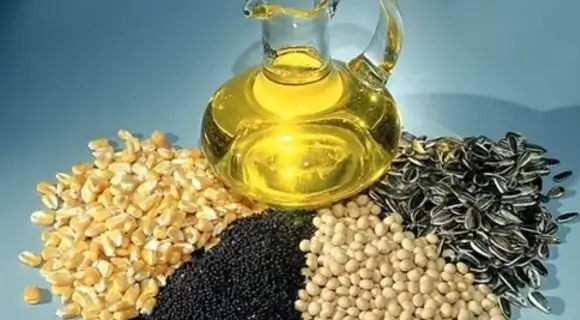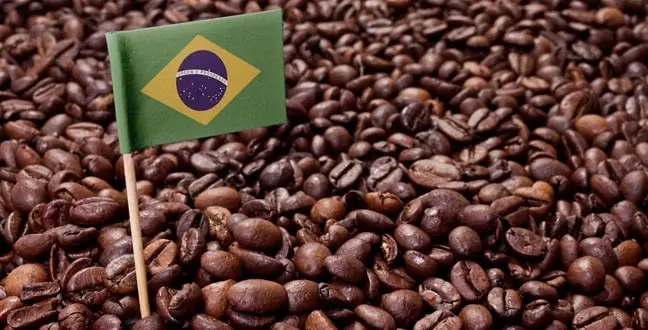The prominence of oilseed production intensifies with the rise in world demand for edible oils and vegetable oils. In 2024, various countries are prominent as among the key producers of oilseeds across the world. These countries are very instrumental in meeting the needs that always arise in the foods, agriculture, and biofuels industries. In this text, we take a look at the top ten oilseed producing countries in the world, their contributions as well as key crops produced.
Countries With Highest Oilseeds Production
1. India: (31.4 million tons in 2020)
The world’s greatest oilseed producer is India, producing 31.4 million tons in 2020. This country’s diverse agroclimatic circumstances make oilseed production great, strengthening its agricultural power. India’s vast landscapes support groundnut, mustard, coconut, sesame, sunflower, soybean, and castor seeds. India’s agriculture sector fuels its economy and dominates oilseed production. Excellent climate and extensive agricultural tradition make India a leader in oilseed growing. Oilseed growers in the nation employ modern agricultural practices and tenacity to produce a lot. India meets world oilseed demand with sustainable agriculture and technology. India dominates the oilseed market due to its agricultural resilience and innovation. India produces oilseeds, food, animal feed, and biofuels. India is crucial to addressing these industries’ needs because of oilseeds’ versatility.
2. United States: (29.3 million tons in 2020)
The US produced 29.3 million tons of oilseeds in 2020, second worldwide. It grows essential oilseeds on its diverse agricultural landscapes, strengthening its worldwide relevance. US oilseed production relies on soybeans, canola, cottonseed, and sunflower. The nation’s vast grounds sustain oilseeds, boosting global supply. Strategically producing these crops meets local needs and makes the US a major oilseed exporter, satisfying worldwide demand. Innovative farming practices and technology have boosted oilseed yield nationwide. Modern methods increase efficiency and production, helping the US meet and surpass global oilseed demand.
3. Brazil: (24.5 million tons in 2020)
The agricultural giant Brazil produced 24.5 million tons of oilseeds in 2020, ranking third internationally. Brazil, with its lush area, promotes soybean, cottonseed, and castor seed cultivation. Brazil’s smart use of its huge and fertile areas for various crops has increased oilseed production. Brazilian soybeans, a staple, thrive in the rich soil and climate, producing oilseeds. Cottonseed and castor seeds diversify Brazil’s oilseed portfolio, showing its agricultural versatility. Brazil’s rapid agricultural expansion makes it a top oilseed producer. The nation has expanded its agricultural areas to meet global market demands utilizing its vast land resources. The country’s decent environment boosts oilseed crop growth. Global industry relies on Brazil’s oilseed exports. Sustainable agriculture improves the nation’s oilseed market contributions ecologically and economically.
4. China: (22.5 million tons in 2020)
Fourth-largest oilseed producer China produced 22.5 million tons in 2020. China’s agriculture and oilseed market depend on soybeans, peanuts, and rapeseed. China purposely grows soybeans, an oilseed crop, over its vast and diversified landscapes. China’s oilseed portfolio includes peanuts and rapeseed, showing its ability to meet global market demands. Chinese oilseed consumption and production dominate the global oilseed market. Chinese consumers need edible and vegetable oils due to its large population and expanding middle class, making it a major oilseed market. Chinese producers’ commitment to meeting local needs while contributing to global supply solidifies their role in the oilseed industry’s complicated balance.
5. Argentina: (18.1 million tons in 2020)
Argentina produces 18.1 million tons of oilseeds, ranking sixth in 2020. Argentine agriculture emphasizes soybeans and sunflowers. This strategic approach has made the nation a significant oilseed producer. Argentina produces most oilseeds from soybeans, which thrive in its diverse and fertile terrain. Argentina responds to global market requirements by diversifying its oilseed portfolio with sunflower seeds. Argentina chooses oilseeds that flourish in its agroclimate. Long agricultural tradition and innovation have made Argentina a global oilseed leader. Argentina meets world oilseed demand due to its perfect environment. The country’s agricultural methods combine tradition and technology for sustainability and efficiency.
6. Indonesia: (16.5 million tons in 2020)
Indonesia produces 16.5 million tons of oilseeds in 2020, sixth globally. Indonesia is a developing player in the global oilseed market due to its key oilseed crops: palm oil, soybeans, and coconut. Over crucial land, Indonesia grows palm oil, its principal crop. Oilseed diversity is boosted by soybean and coconut farming. Indonesia became a global oilseed leader by choosing a strategic oilseed crop that fits its agroclimatic conditions. Indonesia’s advantageous location boosts its oilseed production. Oilseed crop growing is viable in Indonesia due to its abundant natural resources and suitable environment. Sustainable farming practices show the nation’s dedication to environmental and agricultural balance.
7. Nigeria: (14.1 million tons in 2020)
Nigeria produces 14.1 million tons of oilseeds in 2020, sixth internationally. Nigeria’s principal oilseeds are palm, peanut, and soybean. Due to this strategic focus, the nation now meets local and global oilseed demand. Nigeria’s unique agroclimatic conditions support palm oil, its principal oilseed. Nigeria diversifies its oilseed portfolio with groundnut and soybean output and displays adaptability to other crops. These oilseeds were chosen because Nigeria promotes environmentally friendly agriculture. Agriculture in Nigeria reacts to global developments. Nigeria’s economic growth depends on this sector, which fulfills expanding oilseed demand locally and globally. Nigeria’s dedication to oilseed supply is shown via sustainable agriculture.
8. Ukraine: (13.5 million tons in 2020)
Ukrainian oilseed output is sixth worldwide, at 13.5 million tonnes in 2020. Ukraine’s principal oilseeds are sunflower, rapeseed, and soybean. This strategy emphasizes the nation’s oilseed market supremacy. Ukraine’s extensive agricultural territory produces sunflower seeds for oilseed production. Ukraine’s oilseed portfolio expands with rapeseed and soybean output and shows its versatility. Ukraine picked oilseeds because they thrive in its agroclimate. Ukraine’s international oilseed significance is boosted by agricultural improvements and favorable laws. Modern farming practices and technology have increased agricultural production and efficiency across the nation. These innovations and oilseed industry-friendly laws make Ukraine a worldwide player.
9. Pakistan: (11.7 million tons in 2020)
In 2020, Pakistan produced 11.7 million tons of oilseeds, seventh worldwide. Pakistan’s principal oilseeds include cottonseed, rapeseed, and sesame. This strategic priority highlights the nation’s prominence in the dynamic global oilseed environment. Pakistan grows cottonseed, an oilseed, throughout its agricultural regions. Rapeseed and sesame growing diversify Pakistan’s oilseed portfolio and demonstrate its adaptability. Pakistan emphasizes agroclimatically suitable crops, hence these oilseeds were picked strategically. Pakistan’s oilseed role is defined by its agricultural practices and commitment to local and global demands. National farmers’ expertise and desire enhance oilseed supply internationally. Pakistan supplies raw material needs for food processing, animal feed, and other industries.
10. Russia: (10.5 million tons in 2020)
Russia produces 10.5 million tons of oilseeds in 2020, tenth worldwide. Russia’s principal oilseeds are sunflower, rapeseed, and soybean. The nation becomes a big participant in the volatile oilseed market with this strategic focus. Over its vast agricultural region, Russia grows sunflower seeds, a significant oilseed crop. Russian rapeseed and soybean production diversifies its oilseed portfolio and exhibits its crop tolerance. Russia emphasizes agroclimatically suitable crops, hence oilseeds were selected. Large agricultural acreage and favorable climate make Russia a significant oilseed producer. The country’s plentiful terrain and diverse climate make oilseed production effective. These factors make Russia a worldwide player, along with its dedication to modern agriculture.
Conclusion:
Production of oilseeds in the world scenario is a dynamic landscape where it is influenced by many diverse factors. And these top 10 oilseed producers act as a driving force to cope up with the increasing demand for edible oils, animal feed, and biofuels throughout the world. The countries have continuously adapted to this change in the agricultural landscape through continuous innovations that shape the world oilseed market. Equally, he must be prepared in understanding the complex of the oilseed industry with factors such as weather condition, crop prices, and government policies because oilseed production goes up and down.

Brandon is the cheif editor and writer at WorldUnfolds.com. With a passion for storytelling and a keen editorial eye, he crafts engaging content that captivates and enlightens readers worldwide.















